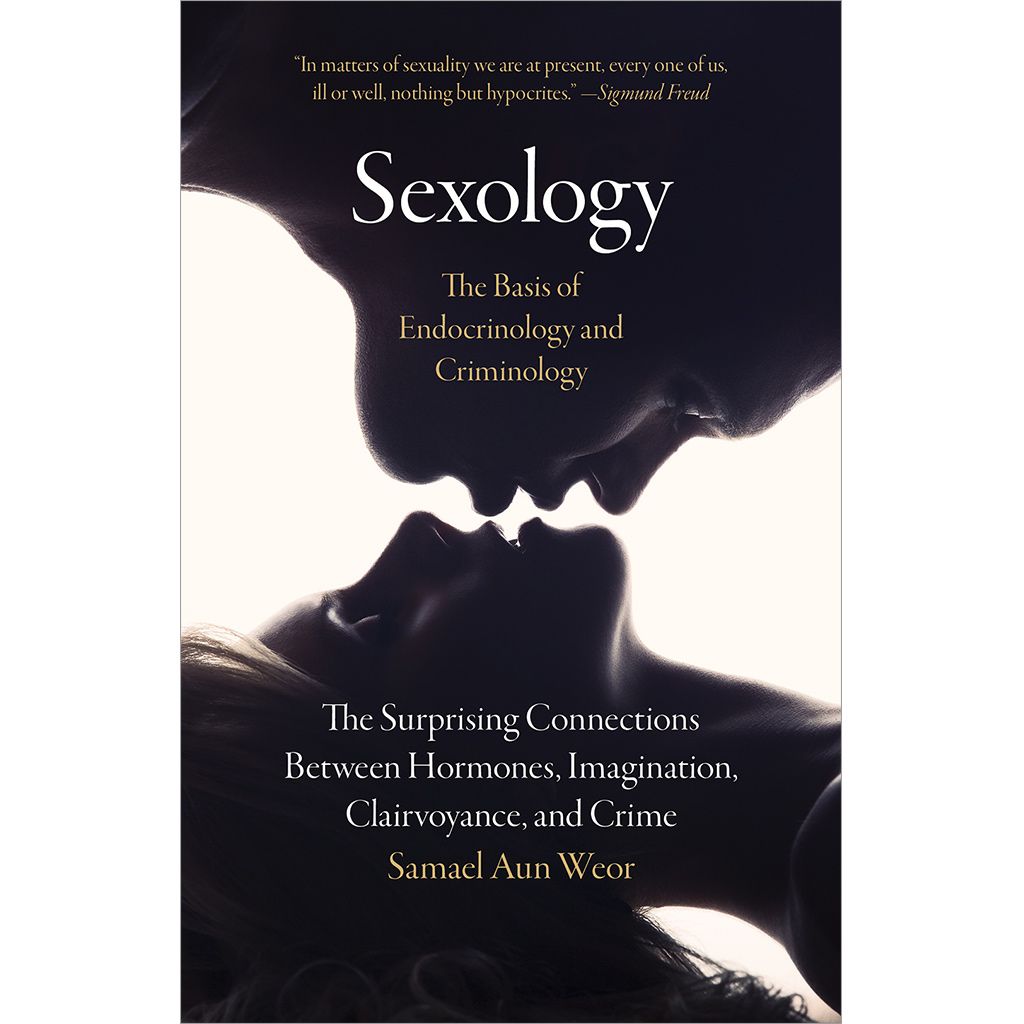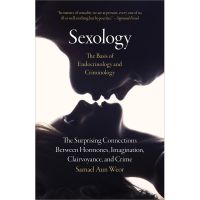Chapter:
Pedagogic Psychotherapy
There are two types of criminal authors.
The first are those who lead others into delinquency by means of hypnotism, spiritualism, intimidation, coaction, witchcraft, psychological constriction, etc. These are the mediate authors.
The second ones are the immediate authors, those who commit the concrete crime, the factual situations, the criminal situational reactions, etc.
We, the partisans of expanded psychiatry, expanded with Theosophical and Rosicrucian matters, believe that criminology is a very profound science.
Adler, Jung, and Freud have given psychiatry the A, B, C’s of scientific criminology.
The penal code is not criminology. The penal code is only a human covenant in order to defend themselves from society.
The satyrs, for instance, are criminals even if they are not enclosed within a jail.
The endocrine pathologies lead to crime; nonetheless, the penal code has nothing to do with it.
Eroticism, accompanied by personal pain, is related with the instinct of power and with the sexual instinct. This is masochism. The sadist inflicts pain to his/her sexual partner in order to feel pleasure. Those forms of sexual perversion constitute that which is called algolagnia.1
The instinct of power and the sexual instinct are related with the diencephalon2 and the gray cerebral nucleus that control their manifestations.
Anger, the origin of too many bloody cases, corresponds to the instinct of power.
Love is related with the sexual glands. How many times both love and anger unite, mix, and condition each other until becoming crime!
Love and anger, sexual instinct, and instinct of power have their plusses and minuses in the biorhythm of our glands of internal secretion. We recommend the book Biorhythm by Dr. Krumm-Heller.
Love and anger have their mutual transferences and their most capricious psychic combinations.
Traumas and nervous impressions often disturb the functions of the central nervous system and the functions of the autonomic nervous system, as well as the glands of internal secretion.
The sexual psychopathic personality has, for instance, very complex origins. The deviation of the sexual instinct and the instinct of power originates an infinite variety of psychopathic, schizoid, and compulsive personalities.
The sadists and masochists are the best example of what the deviation of the sexual instincts and the instincts of power signifies. The sadomasochists commit the bloodiest crimes that overwhelm by their monstrosity.
Fetishism,3 with its black masses and witchcraft, form part of this criminal constellation. Nevertheless, one is overwhelmed when one sees the judges laughing when faced with witchcraft, its “voodoo dolls” and fetishism.
On a certain occasion, a sick individual presented himself before the Public Ministry. He came to place a complaint against his lover who he thought was bewitching him. He was exhibiting, as a corpus delicti, a doll filled with pins. Of course, the authorities laughed at the denouncer, and in order to be rid of him for that moment, they came up with a sophism of distraction, promising to arrest that woman. When that man left the office of the Public Ministry, an employee, while laughing, removed the pins from the doll and afterwards hurled the “embo” into a water pot. The next day, the man full of happiness and health, presented himself again before the authorities. The man gave thanks to the authorities, since he firmly believed that they had cured him. He was feeling himself completely sane. What is this? What does this signify? What does the penal code state about this? The penal code does not understand anything about this.
The study of the scientific part of fetishism and witchcraft corresponds to the science of criminology. It is impossible to laugh before demonstrated facts. In this epoch of radioactivity and in instants in which we are studying atomic physics, it is indeed stubborn and absurd to laugh about “voodoo dolls.” The case that we have narrated here could be included in psychobiology.
The employee who removed the pins from the “doll” and afterwards hurled it into the water pot was indeed the “doctor” of that sick man.
What hurt that man was the imagination of that man’s lover, focused by the pins of that doll. There was a psychobiologic, energetic, and subtle relationship between the doll and the sick man. Those subtle energies are as real as the waves of a radio or as the emanations of radium and cobalt.
The employee who took the pins from the doll and threw it into water altered the instrument of torture, thus he cured the sick man. The employee was the doctor of the sick man.
It is necessary to awaken clairvoyance in order to study psychobiology in depth, to study it profoundly at its base.
We need to transcend the barbaric law of retaliation4 and study criminology in the light of expanded psychiatry.
It is necessary to take into account and to study the hereditary “I,” the unconscious “I,” the infraconscious “I,” the subconscious “I,” the epileptic “I,” the phenotypic “I,” etc.
It is necessary to profoundly explore the “I” within the depths of the mind, and thereafter organize a transcendental psychotherapy in order to cure those unhappy delinquents.
The law of retaliation does not reform anybody. Pain is useless.
We need psychotherapy.
It is necessary to study the syndromes or psychic sicknesses. The criminological diagnostics must be based on expanded psychiatry.
It is necessary to analyze the mental alterations of ourselves based on Theosophy.
It is urgent to know the mental body.
It is necessary to expand forensic psychiatry.
It is necessary to study, in a didactic way, psychobiology and psychopathology.
The valuable work of Lombroso5 and Marro6 is incomplete without Theosophy. The studies of criminal anthropology, perfected by Vervaeck,7 when applied to the purely penitentiary system, are incomplete when psychiatry very well expanded with Theosophical wisdom is not studied.
It is necessary to make a psychosomatic analysis of the delinquent. It is urgent to know the psychophysiology of the delinquent. It is indispensable to study the endocrine glands of the delinquent. It is necessary to analyze the purely psychic functions of the endocrine glands of the delinquent.
Endocrinology and criminology are intimately correlated.
It is urgent to study the nervous systems of central relation and the vegetative organs.
After all of these studies about the delinquent, we must explore in depth his psychological “I,” the most profound depths of his mind.
When we know the Theosophy and Rosicrucian subject matter, the diagnosis8 and prognosis9 of the personality of the delinquent are exact.
Any science is incomplete when one does not know the esoteric wisdom, that is to say, Gnosis.
The diagnosis and prognosis of the delinquent must be exact, otherwise the law of retaliation will continue.
The penitentiaries must be converted into psychiatric clinics, hospitals, universities, schools, workshops, agriculture farms, etc.
Psychotherapy is a polyphase system.
Each delinquent needs specialized professors.
Educational corrective treatment, educational psychotherapy, must be led by psychiatrists who truly have studied Theosophy, Rosicrucianism, hermeticism, yogic philosophy, etc.; that is to say, they must be Gnostics.
Materialist psychiatrists do not achieve the reformation of delinquents. They are an absolute failure.
Materialism already failed in Soviet Russia. It is demonstrated by the evident fact that fifteen million Muslims are living in the heart of Russia.
Practically, only a few fanatics of the Creole materialism have remained who still live, in this day and age, as if this was the eighteenth century.
Good music, conferences, educational and highly spiritual movies, baths, hiking, a sexually healthy life, etc., can reform and cure delinquents.
The law of retaliation has routinely failed.
Now we need corrective psychotherapy.
Footnotes
- “A perversion (as sadism or masochism) characterized by pleasure and especially sexual gratification in inflicting or suffering pain.” — Merriam-Webster.com
- “The central, lower part of the brain that contains the basal ganglia, the thalamus, the hypothalamus, the pituitary gland.” —Collins Dictionary of Medicine
- The word fetishism is used here in the original sense, as “religious worship of a material object—a fetish—believed to be endowed with supernatural properties.”
- From the Code of Hammurabi, Babylon, 1792-1750 BC. Used in the Bible, Exodus 21:24 and Matthew 5:38, “An eye for an eye, a tooth for a tooth.”
- Cesare Lombroso, considered the founder of criminology.
- Antonio Marro, psychiatrist and sociologist, disciple of Lombroso, who believed crime has a biological origin.
- Dr. Louis Vervaeck, founder of the world’s first criminal-biological diagnostic clinic in Belgium in the early twentieth century.
- (Greek “to know, to discern”) A critical analysis of the nature or cause of something.
- (Greek “fore-knowing, foreseeing”) A term for predicting the likely outcome or future development.


